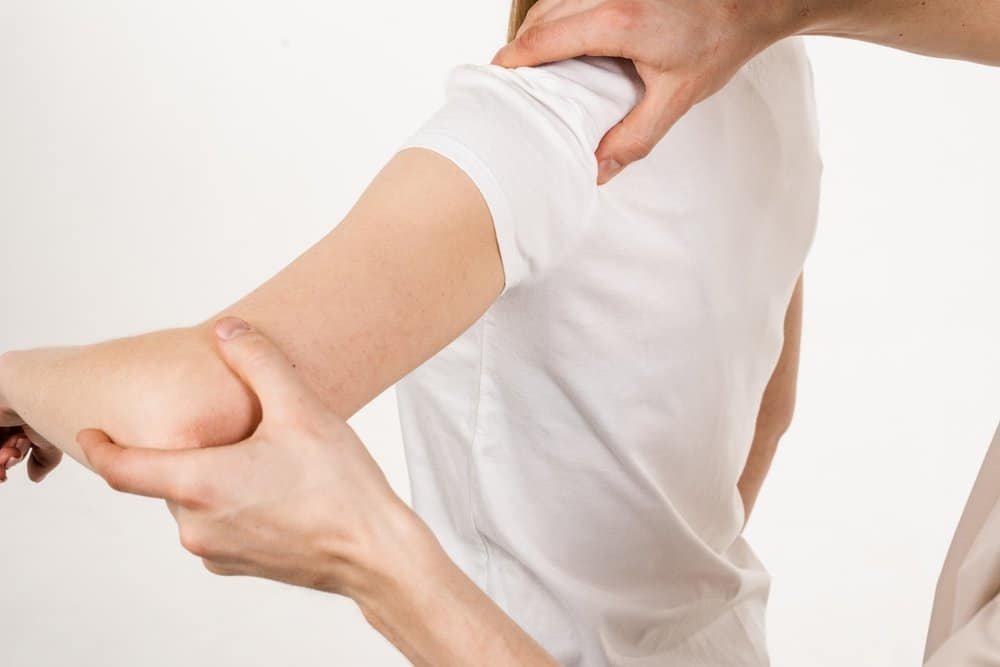Welcome back to our discussion on shoulder injuries, with a specific focus on rotator cuff injuries. If you’ve been following our previous newsletters, you might recall our exploration of the rotator cuff muscles and their crucial role in shoulder movement. Today, we delve deeper into the realm of rotator cuff injuries, shedding light on the complexities and implications of these common shoulder ailments.
Introduction to Rotator Cuff Injuries
Welcome to the first section of our blog post series on rotator cuff injuries. In this discussion, we will explore the essential aspects of rotator cuff anatomy, how injuries can occur, and the impact they have on your daily activities. Let’s delve into the intricate world of shoulder health.Overview of the Rotator Cuff
The rotator cuff is a crucial group of muscles and tendons that play a pivotal role in the movement and stability of your shoulder joint. Comprising the supraspinatus, infraspinatus, subscapularis, and teres minor muscles, the rotator cuff facilitates various shoulder motions, including abduction, internal rotation, and external rotation. One of the primary functions of the rotator cuff is to provide dynamic stability to the shoulder, especially during overhead activities like reaching, lifting, and throwing. The intricate interplay of these muscles ensures smooth and coordinated movement of the shoulder joint.Causes of Rotator Cuff Injuries
Rotator cuff injuries can occur due to various factors, including acute trauma, chronic overuse, degenerative changes, and age-related wear and tear. Acute injuries often result from sudden impact or excessive force applied to the shoulder, leading to tears or strains in the tendon. Chronic overuse, commonly seen in athletes or individuals with repetitive shoulder movements, can gradually weaken the rotator cuff tendons, making them more susceptible to injury. Degenerative changes, such as tendon degeneration or inflammation, can also contribute to the development of rotator cuff injuries over time.Impact on Daily Activities
Rotator cuff injuries can significantly impact your daily life, causing pain, weakness, and restricted range of motion in the affected shoulder. Simple tasks like reaching for objects, lifting weights, or even combing your hair can become challenging and painful. Moreover, the discomfort and limitations imposed by rotator cuff injuries can affect your overall quality of life, hindering your ability to perform routine activities with ease. Seeking timely treatment and rehabilitation is crucial to restoring function and alleviating the symptoms associated with rotator cuff injuries.Detailed Description of the Rotator Cuff Muscles
The rotator cuff is comprised of four main muscles: the supraspinatus, infraspinatus, teres minor, and subscapularis. Each muscle plays a vital role in stabilizing the shoulder joint and facilitating various movements. Let’s explore the functions of these muscles in detail:- Supraspinatus: Situated atop the shoulder blade, the supraspinatus assists in initiating arm abduction, allowing you to lift your arm away from your body. This muscle is particularly susceptible to injuries, such as tears or inflammation, due to its involvement in overhead activities.
- Infraspinatus: Located on the back of the shoulder blade, the infraspinatus aids in external rotation of the arm. It works in conjunction with the other rotator cuff muscles to maintain shoulder stability and range of motion.
- Teres Minor: Positioned beneath the infraspinatus, the teres minor also contributes to external rotation of the arm. Its role is essential in ensuring coordinated movement during activities involving arm rotation.
- Subscapularis: The subscapularis, situated at the front of the shoulder blade, facilitates internal rotation of the arm. This muscle is integral for tasks that require reaching behind the back or across the body.
Understanding the Tendon Structure and Its Role in Shoulder Movement
Along with the muscles, the rotator cuff also consists of tendons that connect these muscles to the bones. The tendons play a crucial role in transmitting the forces generated by the muscles to the shoulder joint, enabling smooth and coordinated movement. The tendon structure is designed to withstand significant loads; however, repetitive movements or sudden impacts can lead to wear and tear, resulting in injuries such as tendinitis or tears. It is essential to maintain tendon health through proper conditioning and avoiding overuse to prevent debilitating shoulder conditions. By comprehending the intricate interplay between the rotator cuff muscles and tendons, you gain insight into the mechanisms underlying shoulder injuries and the importance of preventive measures and appropriate treatment.Causes and Symptoms of Rotator Cuff Injuries
When it comes to shoulder pain and injuries, understanding the causes and symptoms of rotator cuff injuries is crucial. In this section, we will delve into the factors that contribute to rotator cuff injuries and explore the common symptoms associated with this condition.Factors Contributing to Rotator Cuff Injuries
Rotator cuff injuries can be caused by various factors, with aging and overuse being primary culprits. As we grow older, the tendons in our shoulders undergo natural wear and tear, making them more susceptible to injuries. The efficiency of osteoblasts, responsible for tendon turnover, diminishes with age, leading to weakened tendons that are prone to damage. Moreover, individuals who engage in repetitive shoulder-intensive activities, such as athletes or manual laborers, are at a higher risk of developing rotator cuff injuries. The constant stress placed on the shoulder muscles and tendons can lead to micro-tears and inflammation, ultimately resulting in pain and discomfort. It’s essential to recognize the importance of proper shoulder care and avoiding overuse to prevent rotator cuff injuries. Listening to your body, taking breaks during repetitive tasks, and incorporating shoulder-strengthening exercises into your routine can help reduce the risk of injury.Common Symptoms of Rotator Cuff Injuries
Identifying the symptoms of rotator cuff injuries is key to seeking timely treatment and preventing further complications. The most common symptoms include:- Pain: One of the primary indicators of a rotator cuff injury is persistent shoulder pain, especially when lifting or moving the arm. The
- Restricted Mobility: Individuals with rotator cuff injuries often experience limited range of motion in the affected shoulder. Simple tasks like reaching overhead or behind the back can be challenging due to stiffness and discomfort.
Diagnosis and Treatment Options
When it comes to dealing with rotator cuff injuries, understanding the methods for diagnosing these issues is crucial. Whether you’re experiencing shoulder pain or suspect a rotator cuff problem, diagnostic procedures play a pivotal role in determining the best course of treatment. Physical exams are often the first step in diagnosing rotator cuff injuries. Your healthcare provider may perform various tests to assess the range of motion, strength, and stability of your shoulder joint. By carefully examining how your shoulder moves and feels, they can pinpoint potential issues with the rotator cuff muscles. In addition to physical exams, imaging tests are commonly used to get a detailed view of the shoulder structures. Techniques like X-rays, MRI scans, and ultrasound can reveal the extent of damage to the rotator cuff tendons and surrounding tissues. These imaging studies provide valuable insights that aid in accurate diagnosis and treatment planning. Once a rotator cuff injury is confirmed, exploring treatment options becomes essential. From conservative approaches to surgical interventions, there are various paths to consider based on the severity of the condition.Overview of Conservative Treatments
Conservative treatments focus on non-invasive methods to alleviate pain and improve shoulder function. Osteopathy, a holistic approach to healthcare, emphasizes the body’s self-healing abilities. Osteopathic techniques such as manual manipulation and stretching can help restore balance and mobility to the shoulder joint. Acupuncture, an ancient Chinese therapy, involves inserting thin needles into specific points on the body to stimulate healing and relieve pain. By targeting nerve pathways, acupuncture aims to reduce inflammation and promote the body’s natural healing processes. These conservative treatments offer alternative options for managing rotator cuff injuries, especially for individuals looking to avoid surgery or minimize reliance on medication.Surgical Interventions for Severe Cases
In cases where conservative treatments fail to provide relief or when the rotator cuff damage is extensive, surgical intervention may be necessary. Surgical options for rotator cuff injuries vary depending on the specific issues identified during diagnosis. Arthroscopic surgery, a minimally invasive procedure, involves using small incisions and a tiny camera to repair the damaged tendons. This approach typically results in faster recovery times and less post-operative pain compared to traditional open surgery. In severe cases of rotator cuff tears or tendon ruptures, a more extensive open surgery may be required to reattach the tendon to the bone. While the recovery process for surgical interventions can be challenging, these procedures aim to restore shoulder function and improve quality of life in the long term. By exploring the various diagnostic and treatment options available for rotator cuff injuries, you can make informed decisions about managing your shoulder health. Whether you opt for conservative therapies or surgical solutions, prioritizing your shoulder’s well-being is key to regaining strength and mobility.Preventive Measures and Rehabilitation
As we wrap up our discussion on rotator cuff injuries and shoulder care, it’s crucial to understand the preventive measures and rehabilitation techniques that can help you maintain shoulder health and manage any existing issues effectively.Tips for Preventing Rotator Cuff Injuries
Proper shoulder care plays a significant role in preventing rotator cuff injuries. By following these tips, you can reduce the risk of developing shoulder pain and injuries:- Practice good posture: Maintaining proper posture can help alleviate stress on your shoulders and prevent muscle imbalances.
- Warm-up before physical activity: Engage in dynamic stretches and exercises to prepare your shoulder muscles for movement.
- Avoid overloading your shoulders: Be mindful of the weight you lift and the intensity of your shoulder workouts to prevent strain.
- Listen to your body: If you experience any discomfort or pain in your shoulders, take a break and seek medical advice if necessary.
Importance of Rehabilitation Exercises
Rehabilitation exercises are essential for strengthening the shoulder muscles, improving flexibility, and enhancing overall shoulder function. These exercises not only aid in recovery from injuries but also help prevent future issues. Some key rehabilitation exercises include:- Rotator cuff strengthening exercises: Targeting the muscles that make up the rotator cuff can enhance stability and support in the shoulder joint.
- Shoulder mobility exercises: Improving range of motion in the shoulder joint through specific movements can prevent stiffness and enhance flexibility.
- Posture correction exercises: Addressing postural imbalances can alleviate strain on the shoulders and reduce the risk of injuries.






